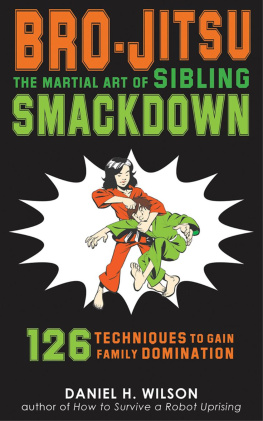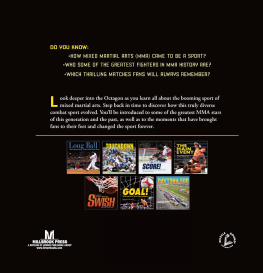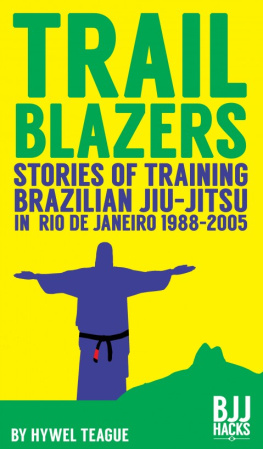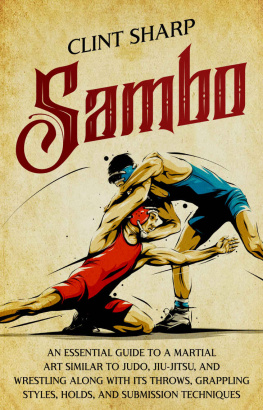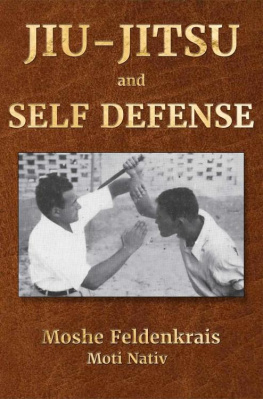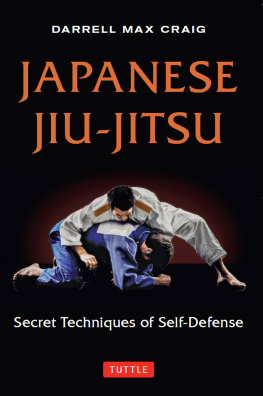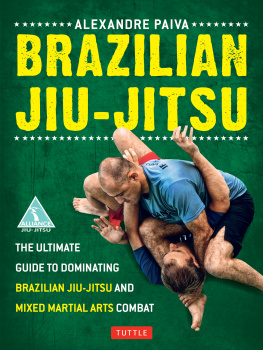The Jiu Jitsu Answer Man
Intriguing questions, thought-provoking responses,
informative articles and fascinating stories
by Roy Harris
The Jiu Jitsu Answer Man
Copyright 2014 by Roy Harris
All rights reserved under International and Pan-American Copyright Conventions. By payment of the required fees, you have been granted the non-exclusive, non-transferrable right to access and read the text of this eBook on screen. No part of this text may be reproduced, photocopied, transmitted, downloaded, decompiled, reverse engineered, or stored in or introduced into any information storage and retrieval system, in any form or by any means, whether electronic or mechanical, now known or hereinafter invented, without the express written permission of Roy Harris.
Requests should be addressed and mailed to:
Roy Harris
2260 El Cajon Blvd. #196
San Diego, California, USA, 92104
Have you ever taken the time to REALLY think your way through the various aspects of training in Brazilian Jiu Jitsu? If you havent, I guarantee you will gain a new perspective on developing useable and repeatable skill sets in Jiu Jitsu after youve read this book!
Roy Harris
Table of Contents
Hi, my name is Roy Harris. I began my study of martial arts back in 1981. Since then, Ive been involved in the training and study of twenty-seven different styles of martial art. My involvement in these various arts was to see how the different arts trained, sparred and dealt with some of the more common forms of attack (e.g. straight and round punch, straight and round kick, a grab, a weapon attack, a ground attack, a multiple assailant attack, etc).
Since I began this journey, I have logged thousands of hours in the various arts. Some arts, I only trained in them for one to two years (200 to 500 hours). Others, I trained for four to five years. And others, I trained for more than three decades.
Here is an overview of all that I have been involved in:
1) Defensive and offensive firearm training
2) Defensive and offensive blade training
3) Cloth, rope and chain fighting
4) Kickboxing training
5) Clinch training
6) Functional trapping training
7) Close-Quarter Battle (CQB) training
8) Throws, sweeps, reaps and takedowns training
9) Nerve strikes and manipulations training
10) Arrest and control training
11) Hard Style Kettlebells training
12) Scenario based training
As a result of all this training, I have obtained multiple black belts and instructor certifications.
To view a short overview of my life, click here .
To see a more extensive view of my diverse martial arts background, click here .

I began my training in Brazilian Jiu Jitsu back in January 1991. I was fortunate to begin my journey at the Gracie Academy in Torrance, California. I was even more fortunate to begin my training with Professors Rorion and Royler Gracie.
When I had graduated from their thirty-six-lesson self-defense program, I was admitted into the group classes. Even though I lived more than two hours away from the academy, I attended group classes and private lessons as often as I could, which varied from once a week to three times a week, depending on my work schedule.
Once I began training in the group classes, I was introduced to Professors Royce and Rickson Gracie. Those were some very fun and memorable days. I miss them!
To this day, I am very thankful to Professors Rorion, Rickson, Royce and Royler for introducing me to their method of Jiu Jitsu. I have so many fond memories of my days training at their academy. Rorion was the consummate businessman and instructor. He knew how to make people feel warm and like family. He also was the best Jiu Jitsu instructor I have ever had - from a teaching perspective. Rickson was the family champion, and it was very obvious to anyone who trained at the academy why. When I sparred with Rickson, it felt like I was sparring with a 400 pound, mind-reading boa constrictor. The feeling was incredible. Royler was the Houdini at the academy. There was hardly a hold, lock or choke he couldnt get out of. I have a lot of really good memories training with him. Royce was my first group class instructor.
Some months into my training, I began to observe a few things about the way Jiu Jitsu was being presented to Americans. The first thing I noticed was that there was no structure or progression to this phenomenal art. Instead, I found the manner in which it was presented was more of a collection of techniques that each student needed to piece together on his or her own. And while this was OK for many students, it was not OK for me. Granted, I could have just gone along with the flow like so many others. However, I felt that something very important was missing from this amazing art, especially for those of us who were more cranial and analytical. So, in my spare time, I began to put the pieces of the puzzle together.
From my early days as a child, I remember looking at things, analyzing them, taking them apart and then putting them back together. My experience in Jiu Jitsu caused me to do the same thing. I took what I had learned from my instructors apart because I wanted to more fully understand what I was doing. Additionally, I wanted to know how to package and present this information to my training partners and, eventually, my students.
I learned as much as I could, trained as often as possible, wrote copious amounts of notes and pondered as much as I could. I was hooked on this Jiu Jitsu thing.
Around 1994, I opened my first martial arts academy in San Diego (PFS San Diego). I taught group classes, private lessons, self-defense workshops and defensive tactics seminars to augment my normal job. Because I was teaching the extreme basics of this phenomenal art seven days a week, I was forced to understand more of it. A lot of my understanding of Jiu Jitsu came about because my students were asking me some really tough questions I hadnt thought about before. This was good for me.
In 1995, I started answering questions on various online forums. Day after day, week after week, and month after month, I made time every morning and every evening to answer as many questions as I could. Some questions were about Brazilian Jiu Jitsu training, others were about self-defense, others were about Jeet Kune Do, and some were even related to edged weapons training-- my favorite area of training. Over time, I discovered that I had answered hundreds of questions and written over 2,000 pages of online content. I am proud to say that several of the things I now see within the Brazilian Jiu Jitsu community today are specifically mine, like specific verbiage and terminology, structure, progression, belt standards, and even a handful of techniques, training methods and tactics.
In writing this book series, I plan to accomplish six goals:
1. To put many of my writings into one location.
2. To give my fellow Jiu Jitsu students some much needed inspiration in the areas of theory, structure, progression, etiquette, technique and training.
3. To help beginner-level students see the big picture, as well as to help them not become so bogged down with technique training.
4. To help intermediate level students look beyond technique and help them learn and develop good training methods, as well as help them prepare for the advanced levels.
5. To encourage and inspire advanced students to develop a highly personalized game, one that helps them adapt to the training partner in front of them, whether he or she is longer, shorter, thicker, thinner, more flexible, etc,, as well as to help them pass on their knowledge and experience to the next generation.








